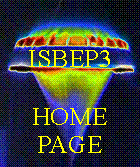Firing a laser at a metal target causes an explosion of ions that can be harnessed into an exotic form of propulsion. Called ‘laser ablation technology,’ the method is being studied intensively by the Laser Propulsion Group at the University of Alabama at Huntsville. Each pound of material generates five to ten times more thrust than a pound of chemical rocket fuel and oxidizer, according to a UAH press release.
 The method was demonstrated last June 7 in a Huntsville laboratory, constituting the first successful demonstration of laser-powered rocket propulsion in a vacuum, according to Dr. Andrew Pakhomov, associate professor of physics at UAH and a key player in the field of beamed energy propulsion. Research assistant Tim Cohen will make the first public presentation on this event on Wednesday at the Third International Symposium on Beamed Energy Propulsion at Rensselaer Polytechnic Institute in Troy, New York.
The method was demonstrated last June 7 in a Huntsville laboratory, constituting the first successful demonstration of laser-powered rocket propulsion in a vacuum, according to Dr. Andrew Pakhomov, associate professor of physics at UAH and a key player in the field of beamed energy propulsion. Research assistant Tim Cohen will make the first public presentation on this event on Wednesday at the Third International Symposium on Beamed Energy Propulsion at Rensselaer Polytechnic Institute in Troy, New York.
Laser propulsion normally brings Leik Myrabo to mind (and indeed, Myrabo will be co-chair of the Beamed Energy Propulsion gathering). An associate professor of engineering physics at Rensselaer, Myrabo is the force behind ‘lightcraft,’ a laser-propelled device that offers a fast and cheap way to Earth orbit. You can read more about the concept here.
But while lightcraft use lasers to heat the air under a metal shroud to create plasma and a shockwave that drives the craft, Pakhomov’s idea of laser ablation peels off one layer of ions at a time directly from the metal target, a method the scientist believes is more efficient.
Centauri Dreams‘ take: Whichever of these ideas bears fruit (and perhaps they both will), they’re potentially key players in building up the kind of space-based infrastructure we’ll need when we eventually go interstellar. Myrabo told me in an interview last year that he was hoping for huge reductions in the cost of getting to orbit. “Our goal is a 1000-fold reduction compared to the Shuttle’s cost, which is $10,000 a pound,” Myrabo said. “Get this down to $10 a pound and people can afford to travel into space.”
General information and a program schedule for the Rensselaer meeting can be found here.


I remember when Robert Forward proposed using high energy laser light to make spacecraft accelerate relativistically. It seem as ‘simple’ as solar space based power being married to light-sails. Technology has moved along since the late 60s; but the wear for all is now a matter of economics rather than proposal strategies . You can do anything with funding…even fail. But to get funding you need confidence for your bank-rollers.
Laser or any other type of transmission proposals should be treated more like a telecommunication project rather than a space vehicle program.
I’d like to see advanced satellites launched and positions by a transmitter beam… the would build actual infrastructure for a future program.